| |
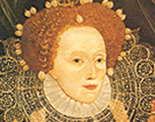










 |
|
 |
|

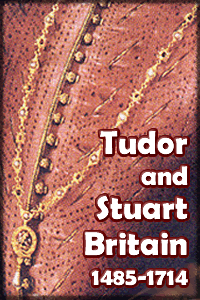
Tudor Folk
and
Their Dogs.
They Could Hunt,
or Be the Toyish Cur,
but Woe to the Mastiff.
By Ronald Fritze
Posted on October 14, 2008, from Athens, Alabama
The past is a foreign country,
they do things differently there.
L. P. Hartley
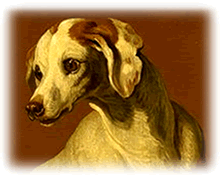
Dogs and people have been living together since time out of mind. Through most of history dogs were working animals, not pets in the modern sense. If one looks at Tudor England, you will discover that the relationship between humans and dogs is really very similar to that of modern Western people with their dogs.
In 1587 the historian William Harrison (1534-1593) brought out his The Description of England, which formed part of Ralph Holinshed’s Chronicle, best known as the book that William Shakespeare used as a source for his history plays. Chapter seven
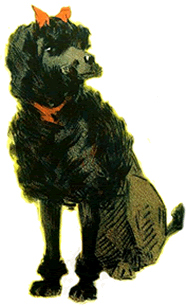 of Book Three of Harrison’s Description is titled “Of Our English Dogs and Their Qualities.” The problem is that chapter seven is not really original to Harrison. It borrows heavily from Arthur Fleming’s Of English Dogs (1576), which is a translation of John Caius’s De Canibus Anglicis.
of Book Three of Harrison’s Description is titled “Of Our English Dogs and Their Qualities.” The problem is that chapter seven is not really original to Harrison. It borrows heavily from Arthur Fleming’s Of English Dogs (1576), which is a translation of John Caius’s De Canibus Anglicis.
Today we call what Harrison
did by the name plagiarism — and that is a big no-no. In Harrison’s day, copying another’s words without attribution into a work of one’s own was still considered to be acceptable behavior. At times, Harrison’s paraphrase of Fleming is so truncated as to be rather confusing, but despite that problem, the Description’s chapter on dogs provides a useful window to look into the canine world of sixteenth-century England.
One difference between how we look at dogs and how Caius, Fleming, and Harrison looked at dogs is that we classify them by the name of their breed — or just call them mutts — while these Tudor writers classified dogs by their function. We think of a dog as a Blue Heeler, a Poodle, or a common mixed-breed mutt. For most of us, dogs are pets and companions, even though the names of many breeds preserve the memory of their original function such as German Shepherd, Labrador Retriever, and Blood Hound. Harrison’s chapter discusses dogs by their functions and not as specific breeds.
Harrison begins with a discussion of hunting dogs, who were put to work in frantic chase of their prey, whether it be a four-footed creature like a fox or a bird in flight. Spaniels and hounds fall into this category. A second type of dog in Harrison’s taxonomical universe are those who retrieve game for hunters, either on land or in water, and again spaniels comprise this category.
Next, Harrison discusses companion dogs, who serve as the pets of well-to-do women. These dogs definitely do not receive the approval of the male writers, who describe them in a rather uncomplimentary and disapproving way:
These [the dogs] are little and pretty, proper and fine, and sought out far and near to satisfy the nice delicacy of dainty dames and wanton women’s wills, instruments of folly to play and dally withal in trifling away the treasure of time,
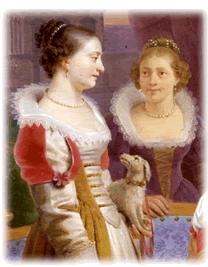 to withdraw their minds from more commendable exercises, and to content their corrupt concupiscences [lusts] with vain disport, a poor silly shift to shun their irksome idleness. These sybaritical [self-indulgent] puppies, the smaller they be, the better they are accepted, the more pleasure they also provoke, as meet playfellows for mincing mistresses to bear to their bosoms, to keep company withal in their chambers, to succor with sleep in bed and nourish with meat at board, to lie in their laps and lick their lips as they lie in their wagons and coaches.
to withdraw their minds from more commendable exercises, and to content their corrupt concupiscences [lusts] with vain disport, a poor silly shift to shun their irksome idleness. These sybaritical [self-indulgent] puppies, the smaller they be, the better they are accepted, the more pleasure they also provoke, as meet playfellows for mincing mistresses to bear to their bosoms, to keep company withal in their chambers, to succor with sleep in bed and nourish with meat at board, to lie in their laps and lick their lips as they lie in their wagons and coaches.
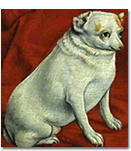 But before he moves on, Harrison does concede that having a small dog might have some medicinal value, as it was thought that keeping a small dog on one’s chest was a way to help a weak stomach. He follows his concession immediately with skepticism about such supposed medicinal value of small dogs.
But before he moves on, Harrison does concede that having a small dog might have some medicinal value, as it was thought that keeping a small dog on one’s chest was a way to help a weak stomach. He follows his concession immediately with skepticism about such supposed medicinal value of small dogs.
Oddly enough, the fourth category of dog are referred to as “homely.” Modern people tend to use the word “homely” to refer to something, particularly a person, that is unattractive, but homely can also mean something that is simple or everyday in nature. In the case of “homely” dogs, Harrison is referring to those kept by shepherds, and also to mastiffs. Sheep dogs were so common among the English that Harrison does not consider that they even needed discussing. So he proceeds to talk about mastiffs.
Very large, strong, and naturally brave, mastiffs were trained by their human masters
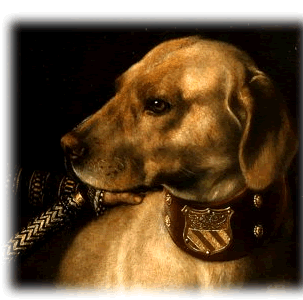 to be even more savage and cruel so that they could be used for the baiting of bears, lions, and bulls. Harrison also noted that mastiffs were excellent guard dogs and protectors for their owners and their families. Harrison claimed that mastiffs were so ferocious that three of them were a match for a bear and four for a lion. In fact, one particularly fierce English mastiff was supposed to have killed a bear, a leopard, and a lion in a single day for the entertainment of the French king in 1571.
to be even more savage and cruel so that they could be used for the baiting of bears, lions, and bulls. Harrison also noted that mastiffs were excellent guard dogs and protectors for their owners and their families. Harrison claimed that mastiffs were so ferocious that three of them were a match for a bear and four for a lion. In fact, one particularly fierce English mastiff was supposed to have killed a bear, a leopard, and a lion in a single day for the entertainment of the French king in 1571.
The fact that mastiffs could kill a lion was said to have offended King Henry VII. He considered the lion to be the king of beasts, just as he was the king of the English. Dogs killing the regal lion provided a very bad example to Henry VII’s human subjects, as did falcons capable of killing eagles, the kings of the air. So the nervous Henry VII had such presumptuous creatures hanged.
English hanging did not use the scaffold for dropping the hanged and breaking their neck. They strung up the person and let them strangle slowly, unless it was a traitor, and then they would be cut down, disemboweled, castrated, and chopped into four quarters — in other words, they were hanged, drawn and quartered. I assume that they put a slip knot around the unsuspecting dogs' heads and then strung the trusting creatures up.
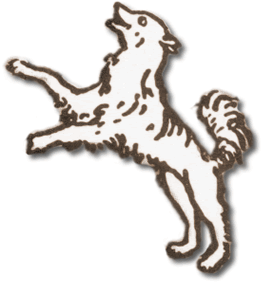 The last type of dog
The last type of dog
in Harrison’s informal taxonomy are the “toyish curs,” meaning that they performed specific tasks or tricks. Some small dogs in this category were “warners” because they guarded a house with their barking. Others were used to turn spits of meat in the kitchens of rich people. Some toyish curs were taught to dance to music as a trick.
At the end of the chapter Harrison describes
how dogs were breed with wolves in France. Somewhat more implausibly in terms of genetics, he describes how dogs had been breed with foxes and bears, the latter producing a particularly mean and ugly offspring. He confesses that he has never seen such a dog and expresses some well-placed skepticism.
No recognizable breed is described in the chapter with the exception of spaniels and mastiffs. Function dominates over form in Harrison’s organization of the dog world. It is definitely a different way of thinking from ours, even though the basic relationship between sixteenth-century people and their dogs is similar on a fundamental level to our own. So, the past may be a foreign country in which they do things differently — but perhaps not all that differently.
Mastiff, greyhound, mongrel grim,
Hound or spaniel, brach or lym,
Or bobtail tike, or trundle tail.
William Shakespeare,
King Lear, III, ix, 71.

To read Dr. Fritze's previous Tudor-Stuart essay, Tudor's Ground Zero: Popular Images Do Not Reflect The Real Henry VIII, click the reading glasses above.

|
|